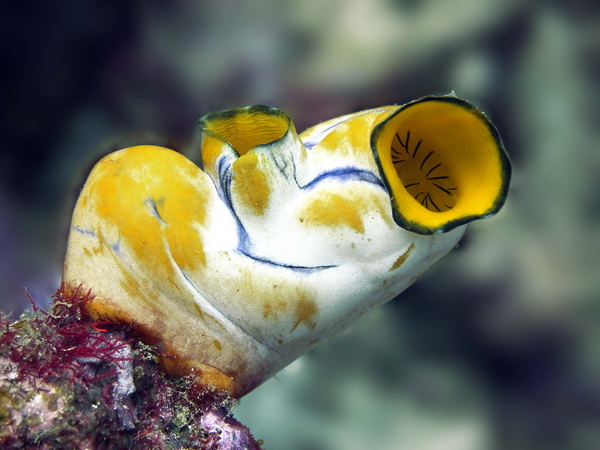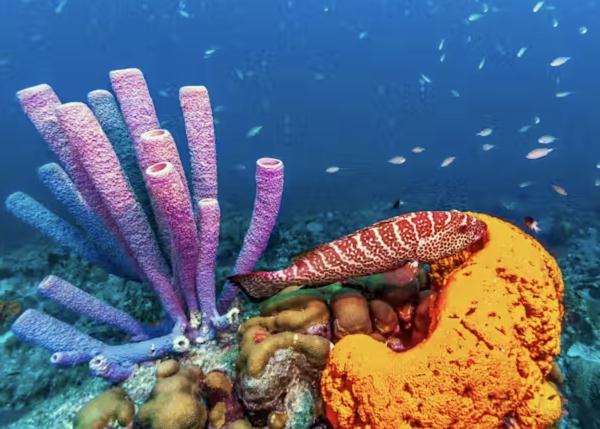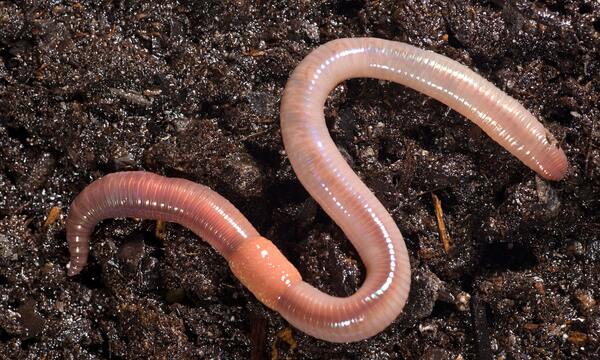The idea of an animal having a neck but no head might seem strange at first. Typically, we think of most animals as having a head, neck, and body structure. However, the natural world contains many exceptions to this rule, with some fascinating creatures that challenge this standard concept. While there’s no vertebrate animal with a traditional neck and no head, there are invertebrate species that fit the idea of "headless" animals due to their unique body plans.
In this article, we’ll explore the creatures that either lack a head entirely or have evolved in ways that make the distinction between head, neck, and body difficult to identify. These animals show us that nature can function efficiently without following the standard anatomical rules we are accustomed to.
Sea squirts are aquarium/52-marine-animals.html">marine animals that belong to the subphylum Tunicata within the phylum Chordata, making them distant relatives of vertebrates. These creatures begin life as free-swimming larvae with a primitive backbone, nerve cord, and a small head-like structure. However, as they mature, they undergo a dramatic transformation.

In their larval stage, aquarium/sea-squirts.html">sea squirts possess a body structure that could be compared to a tadpole, with a distinct head and tail. But once they settle on a surface, such as a rock or coral, they absorb their tail and head through a process called metamorphosis. The adult form becomes a sessile filter feeder, losing the head completely and keeping only a body-like structure with siphons.
While adult aquarium/sea-squirts.html">sea squirts no longer have a head, the neck-like part of their body, formed in the early stages of development, remains. This is why sea squirts are often used as examples of animals with a “neck but no head.” They spend the rest of their lives passively filtering water for nutrients, no longer needing the sensory or cognitive functions of a head.
Although sea squirts are one of the clearest examples, there are other animals whose body designs lack a traditional head or blur the line between head, neck, and body. Let’s explore a few more of these unusual creatures.
Sponges are some of the simplest multicellular organisms on Earth, belonging to the phylum Porifera. They have no brain, no nervous system, and most notably, no head. Sponges are filter feeders, using tiny openings called pores to draw water through their bodies to capture nutrients. The sponge’s body consists of a collection of cells organized around a network of channels and chambers.
With no centralized organs or sensory structures, sponges don’t need a head to survive. They function efficiently as passive filter feeders in marine environments. Although sponges lack both a head and a neck, their unique anatomy is another example of how some animals thrive without traditional body structures.

Jellyfish are well-known for their lack of a head and brain. As members of the phylum Cnidaria, they have a body structure consisting of a bell and trailing tentacles. Jellyfish don’t have a centralized nervous system, but instead rely on a nerve net, which allows them to respond to stimuli like light or touch.
While jellyfish lack a true head or neck, their body plan allows them to move and capture prey with surprising efficiency. Their sensory organs are scattered throughout their body, making the need for a centralized head unnecessary in their lifestyle. The bell-like shape of the jellyfish, combined with its tentacles, functions to propel the animal and capture food, negating the need for a head or neck.

Starfish, or sea stars, are another marine animal that lacks a head or neck. Belonging to the phylum Echinodermata, these animals have a radial symmetry, which means their body parts are arranged around a central axis. Because they don’t have a clear front or back, there’s no need for a head to lead their movement.
Each of the starfish’s arms contains sensory cells that detect light, touch, and chemicals in the water. This decentralized system allows starfish to function without a head or neck, enabling them to move in any direction and find food on the ocean floor.

Flatworms, members of the phylum Platyhelminthes, are known for their simple, flat body structure. These animals lack specialized organs like lungs or circulatory systems, and they don’t have a traditional head, although they do possess clusters of nerve tissue that act like a primitive brain. Their body is flat, allowing them to absorb oxygen directly through their skin.
Flatworms move by gliding along surfaces, and their sensory organs are distributed across their body. This design allows them to function without a clear head or neck, making them efficient predators or scavengers in aquatic environments.

Earthworms, part of the phylum Annelida, are well-known for their segmented body structure but lack a true head. While they have a mouth at the front end of their body, there is no distinct head or neck. Earthworms move by contracting and relaxing their body segments, and their nervous system is spread throughout their body.
Instead of relying on a head for sensory input, earthworms use their entire body to detect vibrations, moisture, and chemicals in the soil. This allows them to navigate underground environments without the need for a head or neck.

The absence of a head or a clearly defined neck in certain animals is an evolutionary adaptation suited to their unique environments and lifestyles. These creatures often rely on other strategies for survival, such as decentralized nervous systems or highly specialized feeding mechanisms. Here’s why some animals might lose the need for a head or neck:
Stationary lifestyles: Animals like sea squirts and sponges are sessile, meaning they don’t move once they find a home. For these animals, a brain and head aren’t necessary since they don’t need to seek out food or avoid predators.
Radial symmetry: Creatures like starfish have no distinct front or back, so a head is redundant. Their radial design allows them to move and sense the environment equally in all directions.
Filter feeding: Many headless animals, like sponges and tunicates, are filter feeders. They passively collect food particles from the water, so there’s no need for a head to actively seek out food.
While the concept of an animal with a neck but no head is rare in the strictest sense, creatures like sea squirts come close. Their unique life cycle, which begins with a head and ends with a headless adult form, challenges our conventional understanding of animal anatomy. Other animals, like jellyfish, sponges, and starfish, also lack traditional heads and necks, demonstrating how evolution has shaped them for different ecological niches.
From sea squirts to sponges, these headless wonders show that life can take many forms, each adapted perfectly to its environment. Whether it’s a filter-feeding sea squirt or a jellyfish drifting in the ocean, these animals remind us of the incredible diversity and creativity of life on Earth.
animal tags: Headless-Animals
We created this article in conjunction with AI technology, then made sure it was fact-checked and edited by a Animals Top editor.